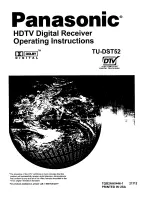
4.5
Band Pass, Phase Splitter, QSD and pre-amps
Since the band-pass filter, Phase splitter, Quadrature Sampling Detector and pre-amp
circuits are so tied up together, I am going to consider them all together in this section.
This circuit implements an input band-pass filter and double-balanced Quadrature Sampling
Detector with low-noise pre-amps. Yet it does this with a low parts count, and resulting low
complexity and cost. The FST3253 is a dual 1:4 multiplexer which is often seen in QSD
circuits. It has fast switching times and very low on resistance of only a few ohms. The input
signal is switched by the quadrature LO to each of the four integrating capacitors C43-C46
in turn, for 90-degrees of the RF cycle each. The result is that the audio difference (beat)
between the RF input and LO input appears across each of the four integrating capacitors,
with four phases at 0, 90, 180 and 270 degrees.
The operational amplifier IC5a takes the difference of the 0 and 180-degree outputs and
amplifies it, resulting in the I output of the QSD. Similarly, IC5b differences the 90 and 270-
degree outputs to produce the Q output.
The combination of the relatively large 470nF capacitors and the low source resistance
results in a fast roll-off of the audio response. This is effectively a very narrow band pass
filter since any incoming RF more than a few kHz away from the LO frequency is greatly
attenuated. The QSD is therefore inherently a very high performance mixer design with high
third order intercept and dynamic range, and low loss (0.9dB).
The FST3253 dual switch is often connected with the two switches simply paralleled
together (which does half the switch ON resistance). But I prefer the double-balanced mixer
configuration which provides higher performance. The double-balanced configuration
requires two RF inputs 180-degrees out of phase (opposite to each other).
Despite the high IP3 and dynamic range, it is still prudent to provide some input band pass
filtering to protect the mixer from strong out of band signals. In this CW transceiver design,
the T1 transformer provides a simple solution to all of these problems with a very low parts
count.
The primary couples the incoming RF into the two secondary windings which feed the
double-balanced detector. One end of the primary is grounded which neatly keeps the DC
potential of the input at ground, so the transmit/receive switch is easily implemented by a
QCX-mini assembly Rev 1.05_Fr
100
Summary of Contents for QCX-mini
Page 14: ...QCX mini assembly Rev 1 05_Fr 14...
Page 16: ...QCX mini assembly Rev 1 05_Fr 16...
Page 17: ...QCX mini assembly Rev 1 05_Fr 17...
Page 18: ...QCX mini assembly Rev 1 05_Fr 18...
Page 20: ...Main board Display board Controls board QCX mini assembly Rev 1 05_Fr 20...
Page 26: ...QCX mini assembly Rev 1 05_Fr 26...
Page 30: ...QCX mini assembly Rev 1 05_Fr 30...
Page 40: ...QCX mini assembly Rev 1 05_Fr 40...
Page 44: ...QCX mini assembly Rev 1 05_Fr 44...
Page 49: ...QCX mini assembly Rev 1 05_Fr 49...
Page 59: ...QCX mini assembly Rev 1 05_Fr 59...
Page 77: ...QCX mini assembly Rev 1 05_Fr 77...
















































